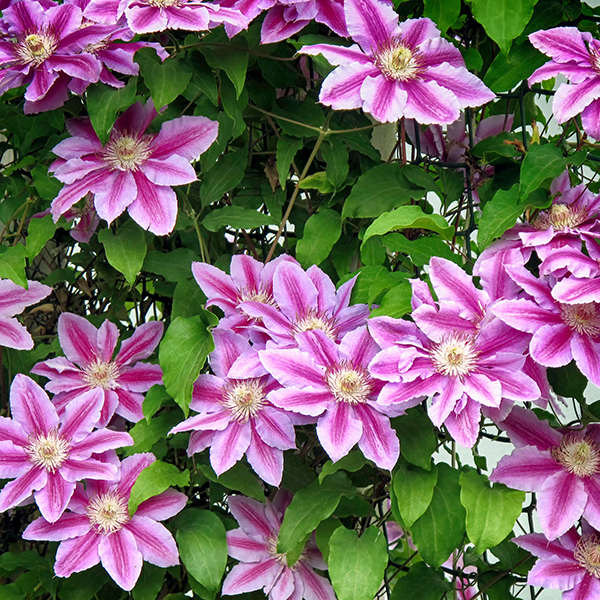
Clematis plants are among the most popular and attractive flowering vines grown in the home landscape. These plants include woody, deciduous vines as well as herbaceous and evergreen varieties. They also vary greatly among species, with different flowering forms, colors, and blooming seasons, though most bloom sometime between early spring and fall.
Growing clematis successfully depends on the type chosen, however, most plants share the same basic growing requirements. Keep reading to learn more about clematis care.
How to Grow Clematis
For proper care of clematis, clematis vines prefer sunny locations (at least six hours of sun needed for blooming) but the soil should be kept cool. An easy way to accomplish this is by planting some type of ground cover or shallow-rooted perennial plants around the clematis. A 2 inch layer of mulch can also be incorporated to keep the roots cool and moist.
Growing clematis vines must be supported in some fashion as well. The type of support system is usually dependent on the variety grown. For instance, poles are acceptable choices for smaller growing clematis vines, which can range anywhere from 2 to 5 feet in height. Arbors may be more suitable for growing larger types, which can get 8 to 12 feet. Most varieties, however, do quite well growing along a trellis or fence.
Clematis Planting Info
Although many clematis vines are grown in containers, they can also be planted in the garden. They are usually planted in fall or early spring, depending on the region and variety.
Clematis plants need plenty of space for adequate air flow as well as a rich, well-draining planting area. You should dig the hole large enough to accommodate the plant, with most recommendations suggesting at least a 2 foot depth of soil amended with compost prior to planting. It may also help to cut the plant back some before planting to lessen shock as it adapts to its new environment.
Tips for Clematis Care
Once established, care of clematis vines is minimal with the exception of watering. They should be watered about an inch or so weekly, and more deeply during dry spells. Mulch should be replenished each spring.
In addition, be on the lookout for common problems affecting these plants. Clematis wilt can cause vines to suddenly collapse and die after their foliage and stems have blackened. Powdery mildew often affects plants with poor air circulation. Aphids and spider mites can be a problem as well.
Pruning Care of Clematis
Annual pruning may also be required to keep clematis plants looking their best. Pruning clematis helps plants remain both attractive and full of flowers. The type of clematis vine grown dictates when and how it should be pruned.
For example, early spring blooming varieties should be pruned back as soon as possible following their blooming but before July, as they bud on previous season’s growth.
Large flowering types that bloom in mid-spring should be cut back to the topmost buds in late winter/early spring.
Late-blooming varieties should be pruned back about 2 or 3 feet in late winter/early spring.
By Nikki Tilley
GardeningKnowHow.com









